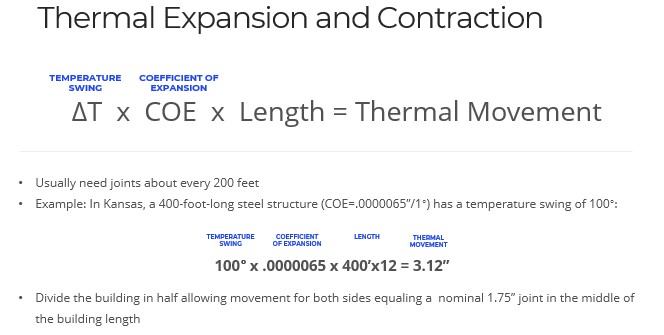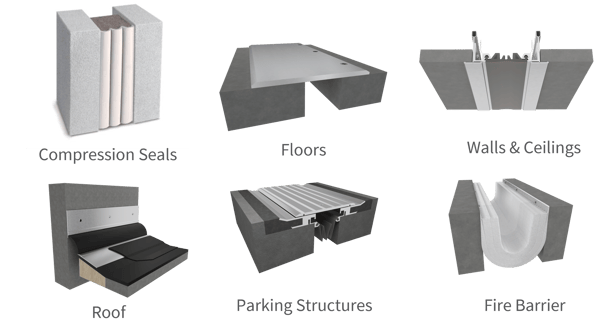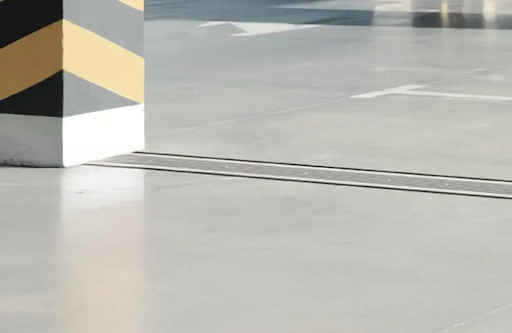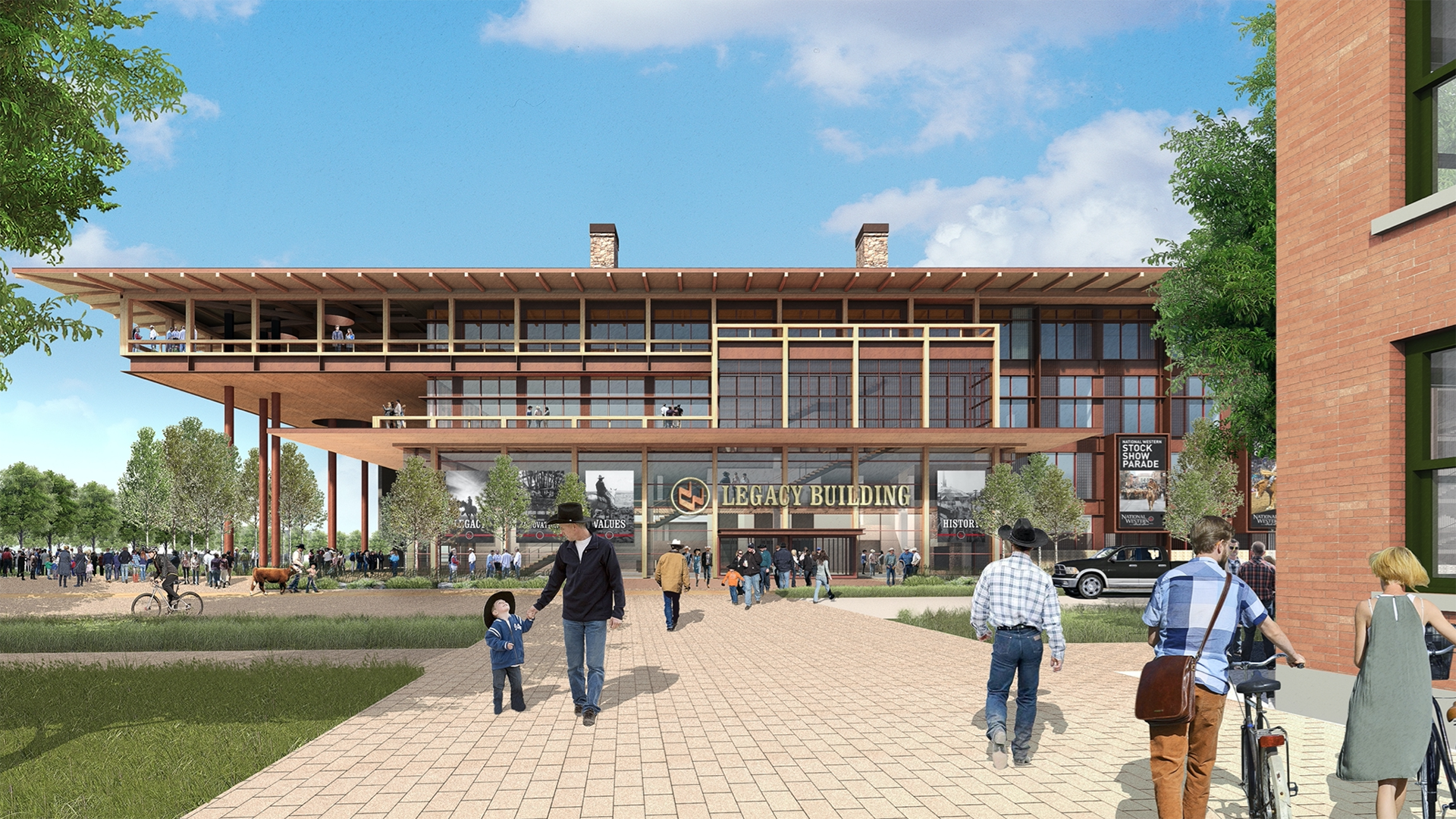Things to Consider When Specifying Expansion Joints

Concrete expansion joint systems are found in many buildings and are designed to close off the gap in a building system and still allow it to move. These systems are designed to solve a variety of scenarios and to disguise them to be virtually unnoticeable.
There are a number of things to consider when specifying expansion joints, but before we get into the specifics, let’s review the details of why building joints are so important.
What Is a Concrete Expansion Joint?
Commonly found in sidewalks, driveways and floors, concrete expansion joints are gaps built into concrete slabs that allow for movement from situations like temperature fluctuations, settlement and natural events.
Why Do We Need Expansion Joints?
A building can move in any direction — expanding, contracting, or sliding along the X and Y axis as well as up and down along the Z axis. Joints are needed to relieve this movement where there are long expanses and where the structure would crash into another fixed or independently moving structure.
What Type of Movement is the Building Subject To and How Much?
The type of movement a building is subject to impacts the joint. A standard expansion joint system allows for a range of motion of ±25 percent of the nominal joint width. For example, a 102-mm (4-in.) nominal expansion joint system will support a gap dimension of 76 to 127 mm (3 to 5 in.). An expansion joint specified to seismic standards supports movement of ±50 percent or, in this example, a gap of 51 to 152 mm (2 to 6 in.).
It is recommended that you form a close relationship with the structural engineer to be able to share ideas and ensure you are both on the same wavelength.
It is also important to remember that the nominal joint size is slotted in the building, and it expands and contracts from this size. However, you are designing to minimum and maximum sizes, so your joint needs to cover the worst case.
8 Joint performance considerations
Joint systems basically close off the gaps in a building system and still allow it to move while permitting persons to move about freely inside without tripping or slipping, and also maintaining the ability to carry the floor loads that have to be moved or rolled over it.
The following are eight things to consider when specifying expansion joints from both an internal and external aspect.
1. Minimize slipping or tripping hazards over the joint. 
Paying attention to expansion joint safety is of the utmost importance. To minimize slipping or tripping hazards over expansion joints make sure the expansion joint covers feature some sort of rib pattern for increased friction and stability.
Any exposed expansion joint strips need to be filled with an elastomer material specifically designed for outdoor or concrete expansion joints use such as polyurethane, silicone, or hybrid systems. Adding traction tapes can also provide additional protection from slipping and/or tripping over expansion joints.
Joints must be held securely together to ensure proper alignment of the joint over its entire length. This can be achieved by using quality sealants, expansion materials, and other fillers.
Additionally, expansion joint cover plates must be properly secured in place to provide additional safety protection.
2. Support necessary floor loads.
Concrete expansion joint systems are designed to absorb the stress of movement by allowing expansion and contraction due to expansion and temperature changes, while still providing support.
As such, architects, specifiers, and contractors should select expansion joint systems meeting area building codes and industry standards in order to ensure optimal performance with their chosen flooring materials.
Ultimately you want expansion joint systems that can keep your floors safe from progressive deterioration as well as safely carry the floor loads occurring within your facility.
3. Maintain fire separation integrity.
Expansion joint systems create expansion allowances to facilitate building movement, temperature variations, and other environmental conditions without compromising their fire-resistant properties.
A good expansion joint system should have numerous features which include intumescent material technology, movement capability, and controlled expansion forces.
4. Provide acceptable continuation of the finish.
Applying a sealant to fill gaps, plus either mastic or polyurethane foam where needed will give it a more complete, professional look.
5. Maintain sound separation integrity.
Concrete expansion joints are an important component of construction when it comes to providing sound and vibration separation integrity.
They reduce the noise that can travel between two adjacent building structures, allowing each occupant to enjoy their space without having to worry about disruptions from the other dwellings.
This is especially critical in high-density areas where residential or commercial spaces come into contact with each other, such as within malls, dormitories, and office blocks. Therefore, expansion joint systems need to be kept well-maintained in order to maintain sound separation integrity.
Without proper maintenance, these vital expansion joints can easily break down leading to undesirable increases in sound transmission that can cause further disruptions for people in the vicinity.
6. Maintain thermal separation integrity.
This is a simple linear equation: large temperature swings and expansive materials like steel and longer lengths create conditions for expansion and contraction.
Understanding the thermal sensitivity and coefficient of expansion of the structural material is key to determining movement needs.
Glass and wood generally have a lower coefficient of thermal expansion than metals. Without proper installation of expansion joint systems, there could be instability within the structure and potentially cause further damage such as cracking of walls or roofing tiles due to thermal expansion and contraction caused by seasonal temperature changes.
Question:
Will your building be exposed to the full climatic range of temperature swings due to loss of power or off-hours energy conservation? If so, then the full climatic temperature swing should be calculated.
Use the calculation below to determine the temperature swing:

7. Maintain moisture barrier integrity.
These barriers form a waterproof membrane inside the expansion joint, allowing water vapor to escape while blocking liquid sources like rainwater or snowmelt so that moisture can't penetrate the interior of the structure. This helps protect against structural damage caused by freeze-thaw cycles or water infiltration.
Maintaining a proper moisture barrier is also key for protecting finish materials from wear or degradation due to exposure to moisture, thus preserving their aesthetic appeal.
Keep in mind:
- Moisture includes rain, snow, and humidity and causes swelling, then shrinking when dry.
- Porous materials are prone to expansion (swell) and contraction (shrink) from moisture (rain, vapor, etc.). The swell and evaporation of water in building materials may impact the integrity of the structure over time. Freezing water inside structural components is of particular concern in colder climates as this causes significant strain on structural materials.
- Parking garages are examples of movement under sidewalks and drives. They have considerable support structures beneath the surface.
- Moisture is mostly prevalent on gymnasium floors. Wood fibers expand when wet—they get fatter, not longer. Wood expands in direct proportion to its moisture content. Different species of wood are more or less susceptible to expansion due to the varying structure of the grain. 500 inches of wood gym floor with an expansion coefficient of .0037 and a moisture change of 3% will expand 5.55 inches.
8. Wind
Wind on the face of a long expanse can cause the building to move perpendicular to the thermal expansion and contraction resulting in differential motion. Some joints are not capable of moving in two directions. (Use your hands flat to the ground to demonstrate motion in two directions—side to side and towards and away from you.)
Remember it is important to take into account that all of these elements: heat, moisture, and wind have an effect on the amount your building moves. Therefore, the kind of joints you specify will play a key role in helping minimize tripping hazards, provide support, maintain separation integrity for fire, sound, thermal, and moisture barriers, and provide an acceptable continuation of the finish.

Be assured that all these types of movements occur in every building, and you should consider if the magnitude of the movement poses a threat to the structure or integrity of the finishes used to cover the structure.
Rely on High-Quality Expansion Joints from Nystrom
Nystrom expansion joints are manufactured to solve a variety of expansion joint scenarios. The growing data center market is key in the expansion joint industry. Custom sizing, materials, and color finishes ensure that whatever you need for your project, we've got you covered.
Visit our website to learn more about our expansion joint systems or contact our team for help on your next project.






